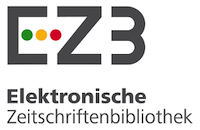Risks and fraud: A theoretical approach
Risks and fraud: A theoretical approach
##plugins.themes.bootstrap3.article.main##
Objective. To explain fraud occurrence —under three theoretical models— and apply it to the organization’s hierarchy. Methodology. Based on the IIA risk outlook for 2021, an exploratory theoretical scope of analysis was constructed. Risks were considered under the umbrella of three fraud theories: Triangle of Cressey; Diamond of Wolfe and Hermanson; and Pentagon of Crowe. Results. Fraud occurrence may be explained by the perpetrator’s position across the hierarchical organization chart: where it is stressed that arrogance from the Pentagon fits the top management position; competence from the Diamond fits the middle management; and need, opportunity and pressure from the Triangle fit mainly the lower management. Conclusions. Fraud was considered under three main models, concluding that it may be explained through different worker motivations related to their management position in the company.
Descargas
##plugins.themes.bootstrap3.article.details##
Abdullahi, R. and Mansor, N. (2015). Fraud Triangle Theory and Fraud Diamond Theory. Understanding the Convergent and Divergent for Future Research. International Journal of Academic Research in Accounting, Finance and Management Sciences, 5(4), 38-45. https://doi.org/10.6007/IJARAFMS/v5-i4/1823 DOI: https://doi.org/10.6007/IJARAFMS/v5-i4/1823
Boyle, M., DeZoort, T. and Hermanson, D. (2015). The effect of alternative fraud model use on auditors' fraud risk judgments. Journal of Accounting and Public Policy, 34(6), 578-596. https://doi.org/10.1016/j.jaccpubpol.2015.05.006 DOI: https://doi.org/10.1016/j.jaccpubpol.2015.05.006
Chayes, A. (2015). Rethinking Warfare: The Ambiguity of Cyber Attacks. Harvard National Security Journal, 6(2), 474-519.
Chen, J. et al. (2015). Big data based fraud risk management at Alibaba. The Journal of Finance and Data Science, 1(1), 1-10. https://doi.org/10.1016/j.jfds.2015.03.001 DOI: https://doi.org/10.1016/j.jfds.2015.03.001
Cressey, D.R. (1953). Other people's money: a study in the social psychology of embezzlement. Belmont, USA: Wadsworth Publishing Company.
Crowe, H. (2011). Why the Fraud Triangle is No Longer Enough. Retrieved from www. crowehorwath.com.
Dilla, W., Harrison, J. and Mennnecke, E. (2013). The assets are virtual but the behavior is real: an analysis of fraud in virtual worlds and its implications for the real world. Journal of Information Systems, 27(2), 131-158. https://doi.org/10.2308/isys-50571 DOI: https://doi.org/10.2308/isys-50571
Dustan, J. (2016). U.S. Critical Infrastructure Cybersecurity: An Analysis of Threats, Methods, and Policy-Past, Present, and Future (Graduate Thesis). University of South Carolina, Columbia, USA.
Fay, R. and Negangard, E. (2017). Manual journal entry testing: Data analytics and the risk of fraud. Journal of Accounting Education, 38, 47-49. https://doi.org/10.1016/j.jaccedu.2016.12.004 DOI: https://doi.org/10.1016/j.jaccedu.2016.12.004
Flowers, A. and Zeadally, S. (2014). US Policy on Active Cyber Defense. Journal of Homeland Security and Emergency Management, 11(2), 289-308. https://doi.org/10.1515/jhsem-2014-0021 DOI: https://doi.org/10.1515/jhsem-2014-0021
Gengler, B. (1999). Cyber attacks from outside and inside. Computer Fraud & Security, 5, 6-7. https://doi.org/10.1016/S1361-3723(99)90142-2 DOI: https://doi.org/10.1016/S1361-3723(99)90142-2
Hall, J. (2011). Accounting Information Systems. Boston, USA: Cengage Learning.
Hathaway, O.A. et al. (2012). The Law of Cyber- Attack. California Law Review, 100(4), 817-885.
IIA. (2020). OnRisk 2021: A Guide to Understanding, Aligning, and Optimizing Risk. Bruxelles, Belgium: IIA.
Kirkosa, E., Spathis, C. and Manolopoulos, Y. (2007). Data Mining techniques for the detection of fraudulent financial statements. Expert Systems with Applications, 32(4), 995-1003. https://doi.org/10.1016/j.eswa.2006.02.016 DOI: https://doi.org/10.1016/j.eswa.2006.02.016
Ngai, E.W.T. et al. (2011). The application of data mining techniques in financial fraud detection: A classification framework and an academic review of literature. Decision Support Systems, 50(3), 559-569. https://doi.org/10.1016/j.dss.2010.08.006 DOI: https://doi.org/10.1016/j.dss.2010.08.006
Power, M. (2013). The apparatus of fraud risk. Accounting Organizations and Society, 38(6- 7), 525-543. https://doi.org/10.1016/j.aos.2012.07.004 DOI: https://doi.org/10.1016/j.aos.2012.07.004
Spink, J. et al. (2017). Food fraud prevention shifts the food risk focus to vulnerability. Trends in Food Science & Technology, 62, 215-220. https://doi.org/10.1016/j.tifs.2017.02.012 DOI: https://doi.org/10.1016/j.tifs.2017.02.012
Spink, J. et al. (2019). The application of public policy theory to the emerging food fraud risk: Next steps. Trends in Food Science & Technology, 85, 116-128. https://doi.org/10.1016/j.tifs.2019.01.002 DOI: https://doi.org/10.1016/j.tifs.2019.01.002
Suh, J., Nicolaides, R. and Trafford, R. (2019). The effects of reducing opportunity and fraud risk factors on the occurrence of occupational fraud in financial institutions. International Journal of Law, Crime and Justice, 56, 79-88. https://doi.org/10.1016/j.ijlcj.2019.01.002 DOI: https://doi.org/10.1016/j.ijlcj.2019.01.002
Vogel, R. (2016). Closing the cybersecurity skills gap. Salus Journal, 4(2), 32-46.
Wolfe, D. and Hermanson, D. (2004). The Fraud Diamond: Considering the Four Elements of Fraud. CPA Journal, 74(12), 38-42.
Zaini, M., Carolina, A., & Setiawan, A. R. (2015). Analisis Pengaruh Fraud Diamond dan Gone
Theory Terhadap Academic Fraud (Studi Kasus Mahasiswa Akuntansi Se-Madura). In Simposium Nasional Akuntansi XVIII, Medan, Indonesia.



































